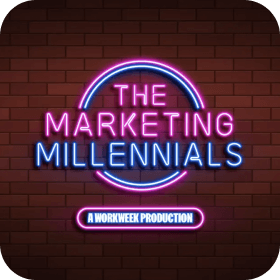When you think of New England, what comes to mind?
Lobster rolls?
Ivy league schools?
Dunkin’??
Personally, I think of Duck Boots. L.L. Bean Duck Boots, to be exact.
(P.S. You have about 10 more lines to guess what the ‘L.L.’ stands for…)
They’re tough enough for any muddy adventure and stylish enough to wear without looking like you’re off to chop wood.
They’re the perfect mix of practicality, comfort, and New England charm that’s lasted over 100 years.
But here’s the thing—L.L. Bean hasn’t always been popular.
At one point, they were DYING.
They got stuck in the past, relying on nostalgia while trends passed them by. As outdoor gear got more high-tech, they had a hard time connecting with younger generations.
But then, they turned it around—BIG TIME.
This is the rise, fall, and comeback of L.L. Bean.
The year is 1911 and Leon Leonwood Bean was sick of wearing wet socks.
Leon was an outdoorsman’s outdoorsman. He hunted, fished, and camped any chance he could, and his gear needed to keep up with him and be Built To Last™ (that’s a future slogan, BTW).
So that’s why after returning from a hunting trip with cold, wet feet, Leon got to work on a solution: the perfect hunting boot.
After some tinkering in his brother’s basement and a couple of trips to the cobbler, Leon eventually had a mockup: a rubber lower to keep the moisture out and a leather upper to keep his legs warm.
Level up your marketing game
Zero BS. Just fun, unfiltered, industry insights with the game-changers behind some of the coolest companies from around the globe.
No spam. Unsubscribe any time.
Now, he just had to get people to take a risk on his new product. So, he bought an address list of Maine hunting license holders (nothing like a good, old-fashioned listbuy) and sent out a mailer advertising his boots with a lifetime, 100% money-back guarantee—an offer that was practically unheard of at the time.
Bean’s first boot was a FLOP.
But his marketing was a win.
With the hunting list, ol’ L.L. Cool Bean had nailed his ICP, fulfilling over 100 boot orders from his 1st mailer alone.
His product, however, was garbage.
Leon’s amateur boots fell apart after a few wears and he ended refunding 90% of his 1st customers. Not a good look.
But to him, the money was small potatoes. Why? He knew he had already hit the jackpot: Product market fit.
Leon’s campaign had proved there was real demand for a durable, waterproof hunting boot. He just had to level-up his product.
So, he took $400 ($13,283.92 in today’s dollars) and doubled down, partnering with the United States Rubber Company to mass produce his dream boot.
They took Leon up on his offer and delivered a boot that wouldn’t fall apart—just in time, too.
Word of L.L. Bean’s marketing stunt had spread, and Leon’s commitment to his 100% money-back guarantee had made national headlines. Soon, people were beating down his door to get a pair of boots, DESPITE what they’d heard about the earlier issues.
The risk paid off. The boots were solid, the demand was there, and L.L. Bean was officially on the map.
From a boot to a brand
L.L. Bean built a name for themselves with high-quality construction, a lifetime warranty, and by associating themselves with old-money Americana.
Fast forward 70 years, and the brand was more than a boot…they were a cultural phenomenon.
By the 1980s, they had become synonymous with the Ivy League uniform known as “preppy” (named after it’s prep school aficionados). As preppy fashion took over the mainstream, books like The Official Preppy Handbook sold millions of copies—and advertised L.L. Bean as “nothing less than Prep mecca.”
As preppy style went mainstream, L.L. Bean grew into a worldwide retail powerhouse. By the ‘90s, they had opened their first international store in Japan and were outfitting everyone from Mt. Everest explorers to your family on Christmas Eve (BRB, making TMM PJs).
In 2012, to celebrate their 100th anniversary (and with $1.52 billion annual revenue to play with), L.L. Bean even launched the Bootmobile, a 20-foot-long, street-legal Bean Boot.
(Fun fact: There are currently 3 Bootmobiles in operation and, as of 2024, they’ve traveled over 350,000 miles across the U.S. for brand activations.)
But, as any century-old brand will tell you…
It’s hard to stay on top
By 2017, L.L. Bean faced an entirely new challenge: stagnation.
Sales were dipping, the brand felt dated and the company was struggling to stay relevant with a younger generation.
L.L. Bean was now competing with sleek, modern, and trendy outdoor brands like Patagonia, The North Face, and Arc’teryx.
These brands were no longer just about utility; they embodied a lifestyle that resonated with the younger, hipper, and socially conscious crowd.
L.L. Bean, on the other hand, seemed stuck in the past; their old-money prestige had faded, and now they just seemed, well, old.
If something didn’t change, it looked like the American icon was going the way of Longaberger Baskets (extinct).
Luckily, something DID change.
That something was Christopher Mcdonough, the newly-hired Chief Brand and Sales officer.
McDonough’s vision was clear: He wanted to modernize L.L. Bean’s image while staying true to its core values—quality, authenticity, and the love for the outdoors.
His strategy wasn’t about abandoning the brand’s heritage; it was about finding a way to connect that legacy with the needs of a new generation of outdoor enthusiasts.
So, they went ALL-IN on outdoors
L.L. Bean released their new direction with the “Be an Outsider” campaign. Along with a new tagline, L.L. Bean worked on reinventing its approach to Marketing and product development.
Across digital ads, television, OOH, and experiential activations, the brand took a bold step in redefining its image.
Instead of solely pushing products, L.L. Bean tapped into the emotional connection people have with the outdoors and tied it back to the everyday.
They also made some tough business decisions like scaling back the lifetime warranty to a 365-day return policy (RIPPP 😭).
The gambles couldn’t have come at a better time—in 2020, the pandemic not only forced workers home from the office, outdoor activities were some of the few safe ways to hang out and socialize.
The results spoke for themselves: In 2021, L.L. Bean clocked $1.8 billion in revenue—a 14% annual increase, making it one of the most successful years in company history.
By embracing the spirit of adventure and the great outdoors, L.L. Bean didn’t just reclaim its place in the market—it reminded us all of the power of stepping outside and rediscovering the world around us.


